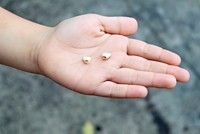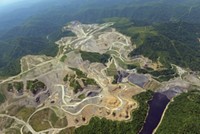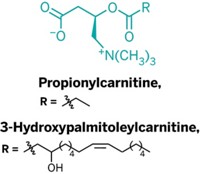Advertisement
Grab your lab coat. Let's get started
Welcome!
Welcome!
Create an account below to get 6 C&EN articles per month, receive newsletters and more - all free.
It seems this is your first time logging in online. Please enter the following information to continue.
As an ACS member you automatically get access to this site. All we need is few more details to create your reading experience.
Not you? Sign in with a different account.
Not you? Sign in with a different account.
ERROR 1
ERROR 1
ERROR 2
ERROR 2
ERROR 2
ERROR 2
ERROR 2
Password and Confirm password must match.
If you have an ACS member number, please enter it here so we can link this account to your membership. (optional)
ERROR 2
ACS values your privacy. By submitting your information, you are gaining access to C&EN and subscribing to our weekly newsletter. We use the information you provide to make your reading experience better, and we will never sell your data to third party members.
Pollution
Baby teeth reveal children's past lead exposure
The study analyzed baby teeth from children living near a polluting battery recycling facility in Los Angeles
by Katharine Gammon, special to C&EN
May 29, 2019

Lead is a potent neurotoxic element with no known safe level, but proving past exposure to lead has been a challenge: blood tests only show exposure someone has experienced within the past 4 weeks. Now, researchers have used lost baby teeth to measure lead levels from children who lived near a polluting battery recycling plant (Environ. Sci. Technol. 2019, DOI: 10.1021/acs.est.9b00429).
In an urban patch of Los Angeles, the Exide Technologies plant processed 11 million car batteries per year, emitting lead and arsenic from its smokestacks on the people who lived in the area until it shut down in March 2015. Residents wanted to know what they had been unwittingly exposed to. Community volunteers gathered 50 baby teeth that had been saved from 43 kids (age 7-18, with a median age of 12) who had lived within a 3.2 km radius of the smelter for their entire lives. The residential communities nearby are more than 90% Latino and rank among the top 10% of the most environmentally burdened neighborhoods in California, according to an analysis by the state.

Jill E. Johnston, an environmental health researcher at the University of Southern California, had been talking with the people who lived near this plant and also knew about work by Manish Arora, an environmental scientist and dentist at the Icahn School of Medicine at Mount Sinai. Arora had used laser ablation and inductively coupled plasma mass spectrometry to analyze trace elements within baby teeth in past studies (PLoS One 2014, DOI: 10.1080/15563650.2018.1552003). Baby teeth start forming in utero and incorporate minerals into layers of dentin and enamel as they develop, like rings on a tree. Johnston thought the same method would work in this situation to measure lead and arsenic. “This was a way to get a better sense of what past exposure looked like,” she says.
The researchers used a focused laser beam to blast material off the surface of the tooth samples for mass spectral analysis, peeling back the layers to look back in time at what they contained. They were able to determine the neonatal line, a band of growth lines that delineate the baby’s birth, and other time-based features in the teeth.
They compared the prenatal and postnatal lead and arsenic concentrations in the teeth with current known levels of lead in the soil of the homes where these children lived, and found that prenatal tooth lead levels increased as soil lead levels increased. Fifteen of the 43 children also had arsenic in their teeth both before and after birth.
Hernán F. Gómez, a medical toxicologist at the University of Michigan who analyzed the blood lead levels of children in Flint, Michigan, says the research was a well-planned and well-executed way to examine an important potent neurotoxic element that has afflicted the very young for centuries. “The authors are to be complimented for their approach in using deciduous teeth to examine prenatal and postnatal exposure to lead in an at-risk, post-industrial setting,” he says.
Johnston says this initial research was a pilot study, and she hopes to analyze more teeth from a wider area around the plant in the future. “It’s important to generate and share data so people can learn more about what the exposures may have been,” she says. “We are hoping we can push more transparency by giving data back to the community.”





Join the conversation
Contact the reporter
Submit a Letter to the Editor for publication
Engage with us on Twitter